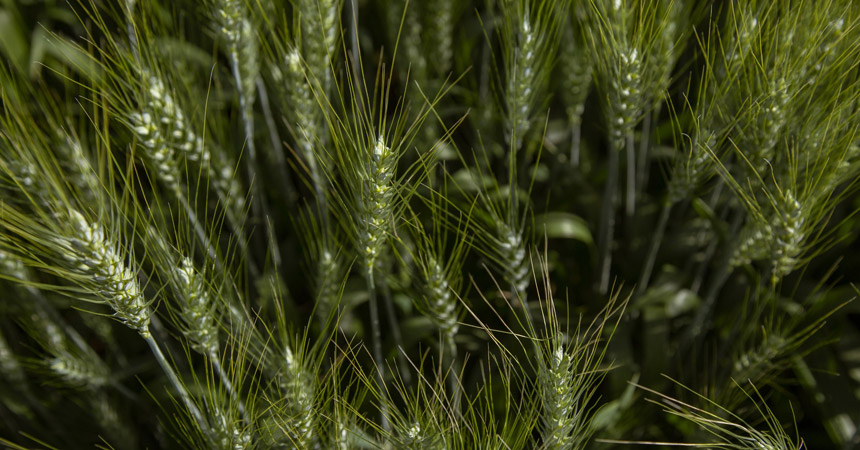Improving Yield, Yield Stability and Grade Protection in Western Canadian Spring and Durum Wheat Cultivars – An Integrated Approach

Written By: Ian Doig
“In plant breeding, we generally don’t think in absolutes,” said Pierre Hucl, a wheat breeder with the University of Saskatchewan Crop Development Centre (CDC). “We think in relative terms.” Progress in the 10- to 12-year marathon required to create a new wheat variety is measured against the latest check varieties. In support of this ongoing progress, the CDC received just under $3 million for spring and durum wheat variety development in the latest five-year Canadian National Wheat Cluster.
“It’s really about critical mass,” said Hucl. “You establish a pipeline and manage it as efficiently as possible.” Such efficiency is key, as the addition of each new gene targeted to resist disease or climate stress may double or triple the base breeding material required to develop a variety. “The funding allowed us to do that,” said Hucl. “In Durum and spring wheat, we achieved our goals.”
Recent new variety releases include CDC Vantta, a semi-dwarf durum. It is short-strawed with high yellow pigment. Described as something of a replacement for the older Navigator variety, it enters commercial production in 2023. In spring wheat, CDC SKRush is a high yielding, mid-maturity variety that features a new dwarfing gene. To Hucl’s knowledge, the gene has not previously been deployed in CWRS wheat.
Hucl also describes dough strength or extensibility as a critical end-use trait CDC has concentrated on. In CWRS, stronger dough properties can compensate for lower protein levels to produce great bread. However, milling wheat lines and testing their dough is expensive and time consuming. To identify desirable lines prior to this step, the CDC team developed a rapid genetic test that will make the process more effective.
Also under the latest Wheat Cluster, the CDC has been able to expand the output of its winter nursery. This will make it more competitive with other wheat breeding entities and move breeding material forward more quickly. The upgrade has doubled the number of contra season outdoor plots CDC sows in New Zealand each winter.
Allowing the CDC to hire the necessary staff, Wheat Cluster funding expanded its employment of breeder chip technology previously developed with funding from Genome Canada. Like rapid COVID tests, this test can quickly and simultaneously identify the presence of several genes in a sample of plant tissue. These can include genes for resistance to disease. Again, this markedly improves the efficiency of variety development by eliminating plant lines earlier in the process.
Wheat Cluster funding has fuelled the CDC’s wheat breeding momentum. “It has put us in a good place,” said Hucl. He cites work the Centre has done to identify novel sources of Fusarium tolerance and resistance. Now that this material is available to breeders it will continue to produce results for years. It will also benefit the wheat industry broadly as CDC shares material with other breeding institutions. “The outcomes of this initiative are going to be seen way beyond the final report,” added Hucl. “The most interesting outcomes of these big projects are often seen later and are sometimes totally unexpected.”